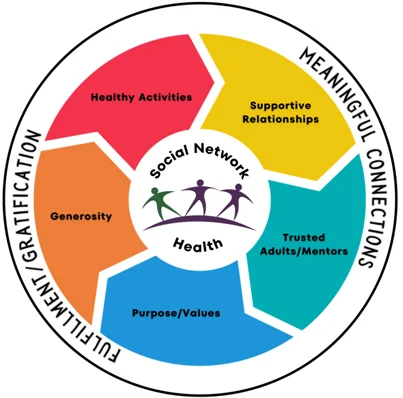

Together these three protective functions create a healthy group that develops and supports healthy individuals.
Individual Strengths and Protective Core Strengths. Individuals will build their abilities and confidence in utilizing healthy, adaptive, skills to thrive in their day-to-day environments, strengthen their social bonds, experience well-being, mange times of stress and transition, and experience academic/professional success. Groups learning together will develop the skills needed to grow and sustain these five core strengths and will develop connections and healthy expectations.






